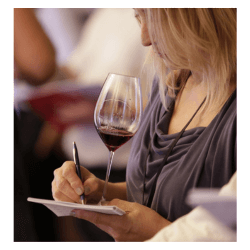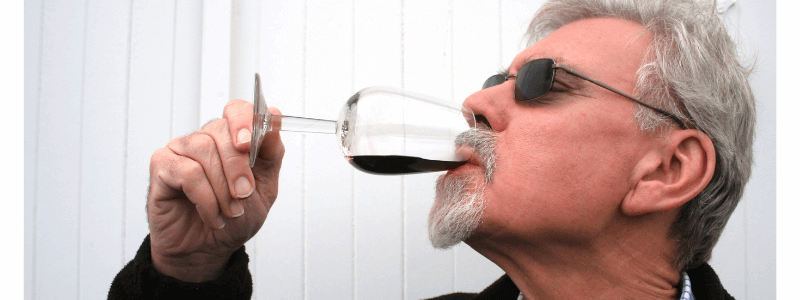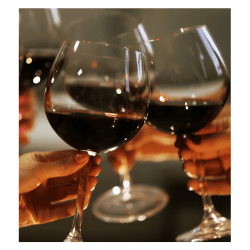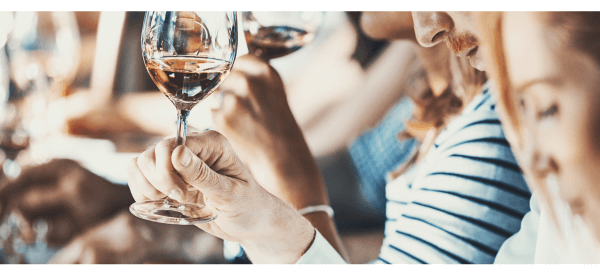No products in the basket.

A while ago I got myself into a Twitter discussion with Victoria Moore, author & wine editor for the Daily Telegraph, about the things we don’t like about trade wine tastings, so I thought it might be interesting to share them with you along with some other dos and don’ts at wine tastings. Whether you are an expert wine-taster or a novice, whether you attend walk-around wine tastings or hosted sit-down tastings and whether you taste 6 or 60 wines, there are certain things you might find useful to know.
Just to set the scene, most trade wine tastings take place in large halls with sometimes hundreds of wines available to taste. The wines are lined up on tables and may be poured for you though sometimes they are self-pour tastings. Whilst I would love to spend my time wandering the vineyards of the world seeking out fantastic wines, trade tastings are more convenient. This way the wines come to you and are a great opportunity to taste a lot of wines in one place, although every palate has its limits. The etiquette for the wine trade fairs can be translated to more consumer-focused tastings which may be walk-around or, like the ones that I host, more often are sit-down tastings with someone talking you through the wines. so how to tackle them?

Will it be walk-around or sit-down? Will someone be talking to you about the wines? Will the wines be poured out for you or will it be a self-pour tasting? Knowing in advance means you can be prepared. Don’t forget if it’s a walk-around to pick up a wine-glass and a tasting book and pen – if you are old school. Notes on your phone will do equally as well and there are also apps designed to allow wine tasting notes to be added.
Victoria Moore’s main bugbear as I recall is people who want to talk to her, not necessarily about the wines, when she wants to focus and get on with her tasting; after all she is at work, not on a jolly. I don’t suffer with that recognition problem so I am left to get on with it but my biggest issue is people hogging the wine tables. I’m not the tallest person and when tastings are busy sometimes struggle to get myself to the front and to the wine. Come on guys – unless you are having a conversation with the winemaker about his or her wine, move away from the table once you have your sample so that others can taste the wine too.
Talking of winemakers, it can be useful to find out who is pouring your wine – so introduce yourself. That way you can avoid any embarrassing situations like the time I met Telmo Rodriguez without realising it was he who had poured my wine. Had I known I would have asked a lot more questions than I did. Shame as Telmo is one of the best winemakers in Rioja if not in Spain and is at the forefront of the changes happening in the region about which you can read more in my Demystifying Rioja blog post. Above you can see me discussing my least favourite grape with Anna Flowerday of TWR wines – and I am still smiling!

Tradition has it at any consumer wine tastings that I have attended in the past that white wines are served first, reds second. In fact there is no particular reason for this and when I judge wine competitions the reds are usually tasted first followed by the whites and rosés. It’s a matter of personal preference although what does make sense is to move from lighter to heavier wines.
Some days I taste whites first but usually I switch between reds, whites and rosés. If you have tasted a lot of wines and are finding it difficult to discern flavours anymore, for example after tasting a lot of heavy or particularly tannic reds, refresh your palate by having a sip of or washing your mouth with champagne or sparkling wine. It really works to neutralise your taste buds. For this same reason I taste sparkling wines after the still wines but, again, it’s a matter of personal choice.
The sugar in dessert wines seems to coat the mouth and at best mask flavours in any further dry wines. It can even make dry wine taste rather bitter.
It is usually expected that you use just one glass though I think you can be forgiven for taking a clean glass after the reds. It should be sufficient however to pour any last drops into a spittoon and if moving from red to white wines, swill the glass with water or with a touch of white wine to “clean” it.
A tasting is a tasting after all and one mouthful should be sufficient for you decide if the wine is a good one and if you like it. There is something irritating about finding out there is none of that wine that you have been looking forward to tasting all day.
 If you hold your wine glass by the bowl, you will warm up the wine inside – if red wine is served too warm it can taste a little flat and the alcohol may dominate making the wine seem out of balance. You may of course want to warm up the wine as wine that is served too cold can mask any complex aromas and flavours and emphasise the tannins. Ideally the wine served at the tasting will be an the ideal temperature so stick to the stem – and it’s easier to swirl your wine if holding the glass by the stem.
If you hold your wine glass by the bowl, you will warm up the wine inside – if red wine is served too warm it can taste a little flat and the alcohol may dominate making the wine seem out of balance. You may of course want to warm up the wine as wine that is served too cold can mask any complex aromas and flavours and emphasise the tannins. Ideally the wine served at the tasting will be an the ideal temperature so stick to the stem – and it’s easier to swirl your wine if holding the glass by the stem.
Swirling your wine in the glass will aerate the wine; you might need to do this if the aromas are not forthcoming. If you aren’t a confident swirler, practise beforehand at home to avoid spraying your wine over other tasters.
I am always amazed by how few people at tastings actually look at the wine in the glass before tasting it. As mentioned in my blog post on the colour of wine, looking at the wine can give you so many clues about the wine’s age, style, grape and origins.
Do sniff the wine before tasting; our sense of smell is closely linked to our ability to taste food- and swirl as mentioned above if the wine seems to be closed. If you have a strong smell in your nostrils that is interfering with your ability to smell a wine, smell the crook of your elbow to reset; don’t ask me how this works but it does. And…
If you do, you will find other people moving away from you as the strong smells can interfere with their ability to smell the wines.

And finally you get to taste the wine. Slosh it all around your mouth as different parts of the mouth can detect different constituents – tannins for example can be detected on the inside of the cheeks – and their texture on the teeth (you can read more about that in my blog post on tannins).
As well as being able to decide if you like the wine or not, you will also be able to assess the wine’s quality by thinking about the different constituents and whether they are in balance, the length of the finish etc as detailed in my blog post on what makes a wine good quality.
Do spit out if you are tasting more than a handful of wines; your taste buds will numb after 40 or 50, maybe not even that many if the wines are particularly heavy or tannic. And there are ways to behave at the spittoon about which I could probably write a whole article but don’t get me started! In brief, I will say don’t hog the spittoon, try to spit straight and with some power to avoid dribbling, which can be quite tricky with tannic wines by the way. And if you are not an expert at spitting, make sure you wear a dark top.
…especially if the winemaker is there; there is nothing they like more than taking you through the finer details of the vineyard situation and the winemaking process. For example I learned this week about the different aspects of the Chablis vineyards left and right of the Serein river and the effects that the position can have on a wine. Amazing that small changes in aspect can mean huge differences in the style of a Chablis.
Tastings are the perfect opportunities to try something different without splashing out for a bottle.
Although your teeth may look black and you may be very tempted to grab the toothbrush and toothpaste as soon as you get home, wait until after you have had something to eat to help preserve the enamel. Also drink lots of sparkling water, chew gum post-tasting to stimulate the saliva and brush your teeth gently.
Now I’ve got all that off my chest I will get back to the tastings and finding some more amazing wines for you.
© 2014-2025 Wines with Attitude Ltd | VAT Reg. No. 181 2419 22 | Registered in England 08918466 | Fiveways, 57-59 Hatfield Road, Potters Bar, Herts, EN6 1HS